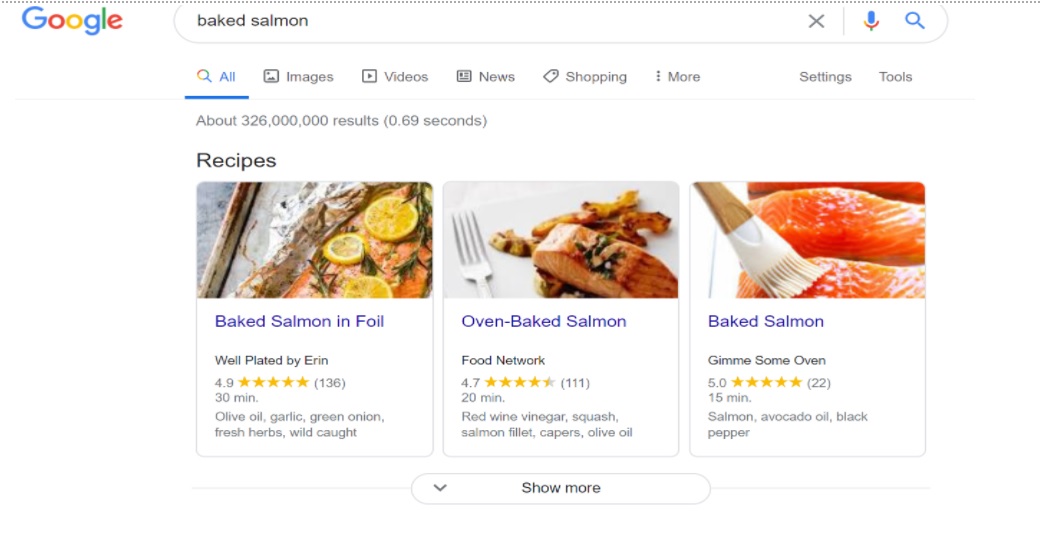As the name implies, keyword search volume refers to the number of searches for a given keyword in a timeframe. Keyword search volume is averaged over a timeframe so that marketers can have an idea of the search term’s competitiveness and overall volume. They can get estimates about how certain keywords drive traffic over time.
Why is keyword search volume important?
Search volume is critical because search engines are the most significant way to get new visitors and traffic to our business. In order to get more visitors, it is important to target keywords that have high volume keywords. If you use the keywords that don’t have high search volume then there are fewer chances that you will get traffic for your content.
It is also essential for your PPC bidding strategy, as high term volumes will tend to be more competitive, expensive, and commercial in terms of intent.
What is SEO competition?
In search engine optimization, competition is between the websites that are competing using the same search terms to rank higher in search engine results. For example, it is possible that the services and products which we provide are similar to the products and services provided by others. In this case, they both can be competitors for each other.
To find out business competitors, the term “competitive analysis” is used. Competitive analysis works as a powerful strategy that can help you to rank higher, get more traffic, and earn more visitors and conversions.
In the competitive analysis, we find out the answers for the following questions:
- Who are my competitors?
- What keywords should I target?
- Where can I find links?
- What topics should I cover?
- How can I outrank others?
There are various ways to do a competitive analysis for your site. The focus areas of this analysis are keywords, links, and content. By working on these key aspects you can improve your site’s SEO.
What are the ways to do Competitor Analysis?
1. Identify your true SEO competitors
You might be probably aware of big players in your industry, but can you identify your main SEO rivals? There may be several SEO competitors outside your niche that you have to contend with in SERPs.
For example, you own a nail salon, trying to compete and rank for keywords like “best nail salons.” In this case, you would be competing with other nail salons for first page results.
But if your nail salon is trying to rank for a “how-to blog,” then you’d be competing with publishing firms as well to gain higher search rankings.
This is true for every industry.
Your top SEO competitors are the ones whose keyword search ranks on the first page of SERPs, regardless of whether they are your business competitors.
If your business operates in multiple niches, then you may have different competitors for each product or service you provide. You can find your top competitors by simply looking at the search results after typing keywords into Google or using competitor analysis tools like SEMrush, Moz, or ahrefs.
2. Keyword gap analysis
Keyword gap analysis, also known as competitive keyword analysis, is a process of identifying the most valuable keywords that your competitors rank high and you don’t.
While conducting keyword analysis, keep in mind that your keywords should:
- Be valuable, i.e. receiving high volume for your business
- They should be ones that you could rank higher for
- Offer a richer analysis by comparing two or more competitors
There are several tools available that can help you in comparing your domains with competitors and gain a critical insight into keywords you can compete for. You can also conduct a page-level keyword gap analysis to analyze keywords you are missing to target.
A deep keyword analysis will help you in identifying keywords having a good search volume and is extremely relevant for your website or page. You can go ahead by adding it to your website or page content and ensure good search traffic.
3. Top content analysis
In addition to analyzing competitors’ use of keywords for content development, you can also consider using their top-performing content. You should delve deeply into the content that provided your competitors with the highest links. As links are the biggest ranking factors, it is sensible to include those content topics on your website.
For creating content in SEO, analyzing competitor’s content is the oldest and most reliable method for improving SERP ranking.
- Begin with discovering the top content of competitors
- Develop your own content and enhance user experience significantly,
- Target similar groups to promote your content
The pro tip here is to enhance your content over what your competitor is offering. Add more features, extra data, attractive images, and more interactive content.
Again, online tools like Moz’s Link Explorer can help you analyze the “Top Pages” content that earned your competitors the most links.
4. Link analysis
Competitor link analysis aims at analyzing the links that are giving higher rankings to your competitors. Link gap analysis is a leading factor for outranking your competitors. Even though it is impossible to rank high without good links, getting credible links is a difficult task too. Use of data and intelligence help in finding good links, you must identify sites that can provide you better links and help in enhancing your site’s SEO rankings.
Now you must be thinking, where to find these sites to get good links? The answer is easy, just analyze your competitors’ sites and see where they are getting these links from. You can approach the sites that have already linked your competitors but have not linked you.
Once you identify the sites that have already linked your competitors, you know that they are interested in the topics that were posted by the competitors. If you prove that your resource is also good, there is a chance that you can earn a link as well.
This process helps you in finding highly relevant pages to get your link from. Online tools like Moz and SemRush provide you a report for Link Analysis that shows you domains and URLs that link your competitors.
Step 1: Start with your domain name in the first field
Step 2: Enter your competitor’s domain
Step 3: Filter and analyze the results
After you get a list of domains that are providing links to your competitors but not to you, you have an action plan of what to do. So, don’t wait and go ahead to develop links for your website and improve your SERP ranking.
5. Google SERP analysis
Here you focus on understanding the searcher intent for your keyword. This analysis aims at getting inside the searcher’s mind and knowing what they are searching for. This task can be easily done by typing your target keyword in Google.
Following is the results for “baked salmon”

Here you can see, top Google results show salmon recipes, instead of other details like the history of baked salmon or the popularity of the dish.
Google results show what is a searcher’s intent while searching for baked salmon. Searchers are looking more for recipes of baked salmon and not other details on it.
SERP metrics
These metrics focus on features like:
- Keyword difficulty
- Link metrics of all pages ranking higher
- SERP features, like “People Also Ask” and featured snippets
Online tools provide a deeper SERP analysis that helps you in analyzing the monthly volume of different keywords, keyword difficulty, organic click-through-rates (CTR), and keyword priority.
SEO Content That Provides Value & Insight
Content provides value and unique insights It is very helpful to provide unique and valuable content to your audience. Unique content is straightforward enough, but what this unique content actually means? What is required to make this unique content? Let's discuss...
What are WordPress tags for SEO?
WordPress tags and categories play a vital role in organizing your site’s posts properly. They can help you to increase the web traffic, boost your page views, and offer a great experience to your potential customers. With the proper use of tags and categories, you...
HTML Errors/ W3C Validations
Lots of HTML errors or sloppy coding may be a sign of a poor quality site. While controversial, many in SEO think that a well-coded page is used as a quality signal. 6 reasons why Google advice to validate your html Valid HTML and crawl rate: In Google search console...




